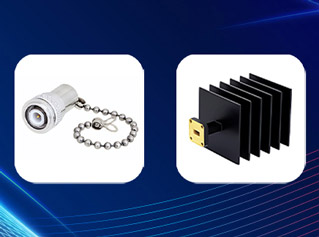-
 Common waveguide components: waveguide terminals
Mar , 18 2025
Common waveguide components: waveguide terminals
Mar , 18 2025
2. Waveguide Terminals 2.1 Performance Characteristics Key electrical parameters include frequency range (determined by waveguide dimensions), VSWR, and input power handling. Physical attributes like size, weight, and material selection (e.g., corrosion-resistant plating) are equally vital. Thermal management strategies vary: 2.2 Materials and Applications A waveguide terminal typically consists o...
View more
-
 Which Is Better: Directional Coupler or Tapper?
May , 08 2025
Which Is Better: Directional Coupler or Tapper?
May , 08 2025
In RF and microwave systems, power distribution is a critical aspect that directly impacts system performance, reliability, and design flexibility. Two of the most commonly used passive components for signal splitting and power monitoring are directional couplers and tappers. While they serve similar purposes in many systems, they differ significantly in structure, application, and performance. Un...
View more
-
 What Is an RF Attenuator and Why It Matters in RF Systems
May , 21 2025
What Is an RF Attenuator and Why It Matters in RF Systems
May , 21 2025
In the world of wireless communications, signal integrity and system protection are paramount. An RF attenuator plays a crucial role in both areas. Whether you’re working in a lab environment, designing a base station, or setting up an indoor DAS system, RF attenuators help manage signal strength and ensure long-term reliability. What Is an RF Attenuator? An RF attenuator is a passive component de...
View more
-
 Difference Between UHF and VHF Antenna: Choosing the Right Frequency for Your Application
May , 28 2025
Difference Between UHF and VHF Antenna: Choosing the Right Frequency for Your Application
May , 28 2025
What Is a VHF Antenna? VHF antennas operate within the Very High Frequency range of 30 MHz to 300 MHz. These antennas are commonly used in: FM radio broadcasting (88–108 MHz) Marine radio communication (156–174 MHz) Aviation communication systems Emergency and amateur radio operations Due to their longer wavelengths, VHF antennas perform well in open and rural environments where line-of-sight cove...
View more
-
 What Is the Difference Between a Power Divider and a Power Splitter?
Jun , 18 2025
What Is the Difference Between a Power Divider and a Power Splitter?
Jun , 18 2025
1. Basic Function — What Do They Both Do? At a high level, both power splitters and power dividers are passive RF components designed to: Take one input signal Split it into two or more output signals Maintain specific impedance (typically 50Ω or 75Ω) Preserve signal integrity as much as possible These devices are commonly used in test setups, antenna feeds, distributed antenna systems (DAS), and ...
View more
-
 What's the Difference Between Microstrip and Cavity Power Dividers?
Jun , 26 2025
What's the Difference Between Microstrip and Cavity Power Dividers?
Jun , 26 2025
1. What Is a Microstrip Power Divider? A microstrip power divider is fabricated using PCB (printed circuit board) technology. It typically consists of microstrip lines, branch networks, and resistors. Often based on Wilkinson design principles, microstrip dividers offer good impedance matching and moderate port isolation. Key Features of Microstrip Power Dividers: Compact and lightweight — Ideal f...
View more
-
 Passive Component Bottlenecks and Solutions in Operator Networks
Sep , 03 2025
Passive Component Bottlenecks and Solutions in Operator Networks
Sep , 03 2025
In operator network deployment, passive components play a crucial role in ensuring stable and efficient RF signal transmission. With the rapid evolution of 5G, DAS (Distributed Antenna Systems), and private networks, the performance requirements for passive devices have become more stringent. However, components such as power splitters, couplers, and combiners often encounter performance bottlenec...
View more
-
 Mastering Power Splitter Design: From Principle to Engineering Practice
Oct , 11 2025
Mastering Power Splitter Design: From Principle to Engineering Practice
Oct , 11 2025
In RF and microwave systems, the power splitter is a core passive component responsible for dividing an input signal into multiple outputs with minimal loss and perfect impedance balance. From cellular base stations to satellite networks and RF test systems, the power splitter ensures signal integrity across transmission paths. 1. Basic Principle of Power Splitters A power splitter divides an inpu...
View more
 Common waveguide components: waveguide terminals
Mar , 18 2025
Common waveguide components: waveguide terminals
Mar , 18 2025